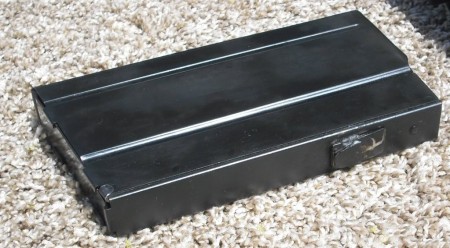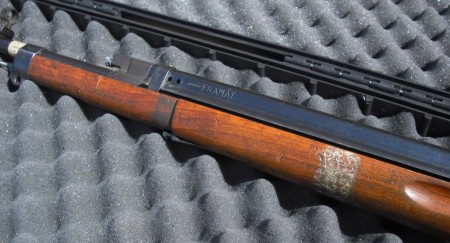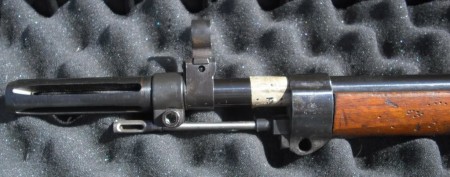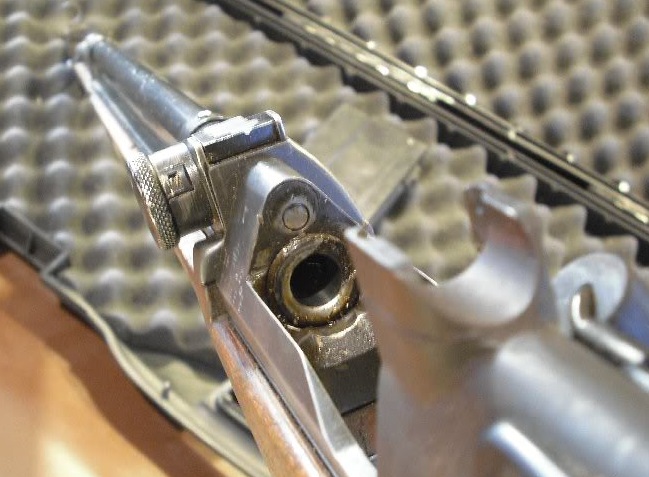In the midst of World War II, the Swedish government adopted the AG-42 Ljungman self-loading rifle, which was chambered for their standard 6.5x55mm cartridge. It was issued to supplement squad firepower, and proved to be an accurate and reliable weapon. In 1965, it and the M96 Swedish Mausers were replaced by the AK4 rifle (an H&K G3). However, before the H&K design was adopted there was experimentation with other options, including updating the Ljungman rifles to a more modern configuration. That particular experiment too the form of the prototype FM-59 rifle:

Just 10 FM-59 prototypes were made, converted from existing AG-42(B) rifles. Bringing the old Ljungman up to date would require a 20-round box magazine in place of the original 10-round magazines and stripper clips and a change from 6.5mm to the NATO standard 7.62mm rifle cartridge. The magazine conversion was pretty simple, since the Ljungman already used a detachable box magazine. A new, larger magazine was designed to fit the action:

When making the conversion to 7.62mm NATO, however, it was decided to abandon the direct gas impingement system that had made the Ljungman design distinctive. In its place, a short stroke gas piston was adapted to the rifle, much like that of an SVT-40. Most sources suggest this was a necessity because of the higher pressure of 7.62mm compared to 6.5 Swedish, but this does not seem to ring true. The pressure difference is not particularly great, and the Egyptian Hakim is essentially a direct copy of the Ljungman which handles 8x57mm pressures just fine. Rather, I suspect the change in operating system was led by a belief that a short stroke piston would be more reliable.
Regardless of the rationale, the FM-59 does in fact have a narrow piston in place of the AG42’s gas tube. This piston is covered by a sheet metal front handguard, which is rather conspicuously marked “<- framåt” (which simply means “front”) at the front end.

Being more modern and tactical, the FM-59 rifles were also fitted with a flash hider in place of the Ljungman’s original compensator holes in the muzzle:

Unfortunately, I don’t have a photograph showing the piston assembly under the handguard, but I do have this shot, which shows the rear end of the piston, which extends out of the receiver to push the bolt carrier with each shot. In a standard Ljungman, this is a small cup which the bolt carrier nests onto when closed, to help retain the gas from firing. That cup has been ground off on this FM-59 (you can see where it was, around the piston end).

The rest of the rifle retains all the characteristics of the original AG-42(B). We don’t have any record of military trials for the FM-59, but it obviously wasn’t accepted for service. Of the ten originally converted, seven are in museum and private collection in Europe, while the other 3 were imported into the US by Sarco in 1990s.

Be the first to comment